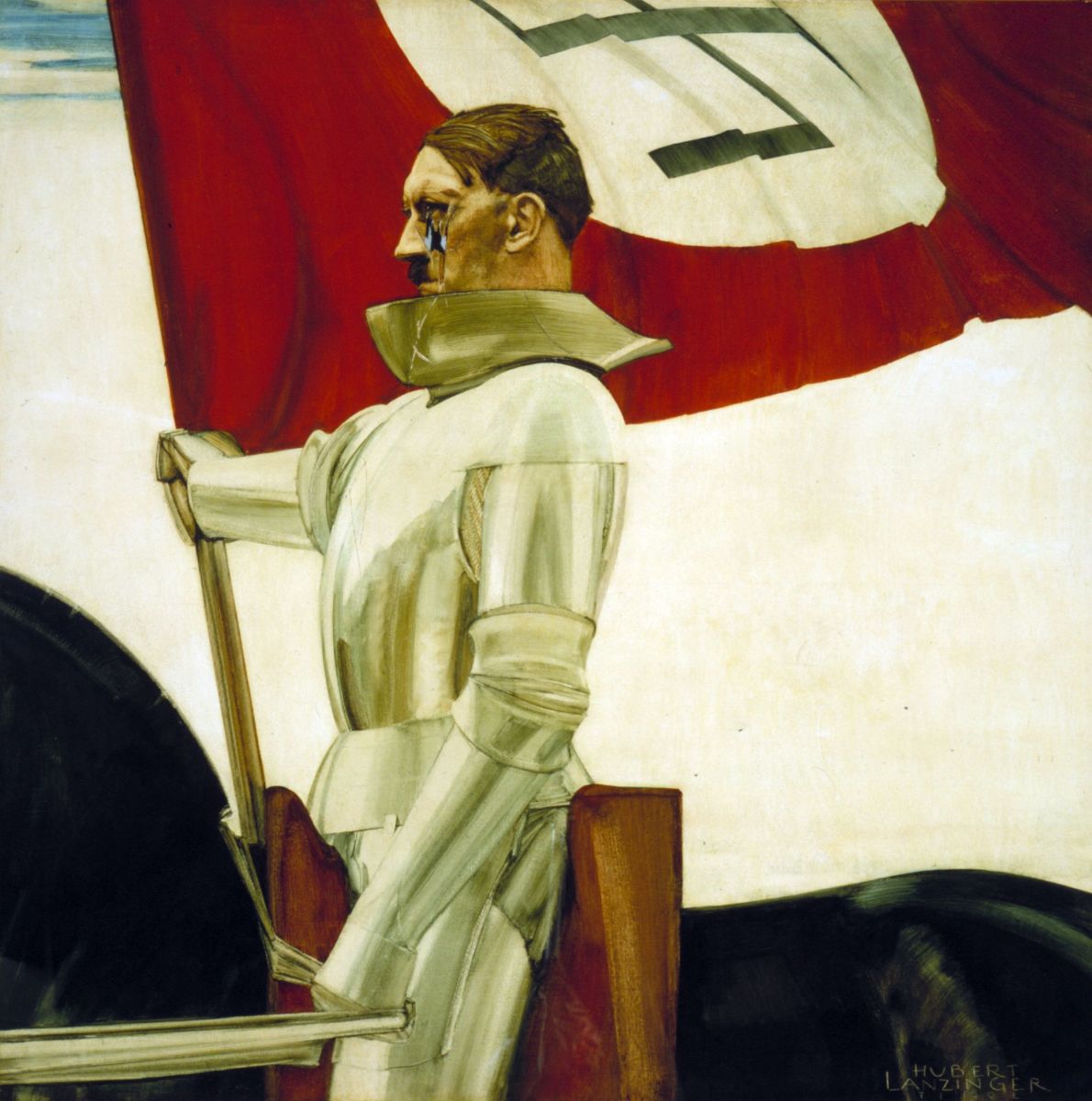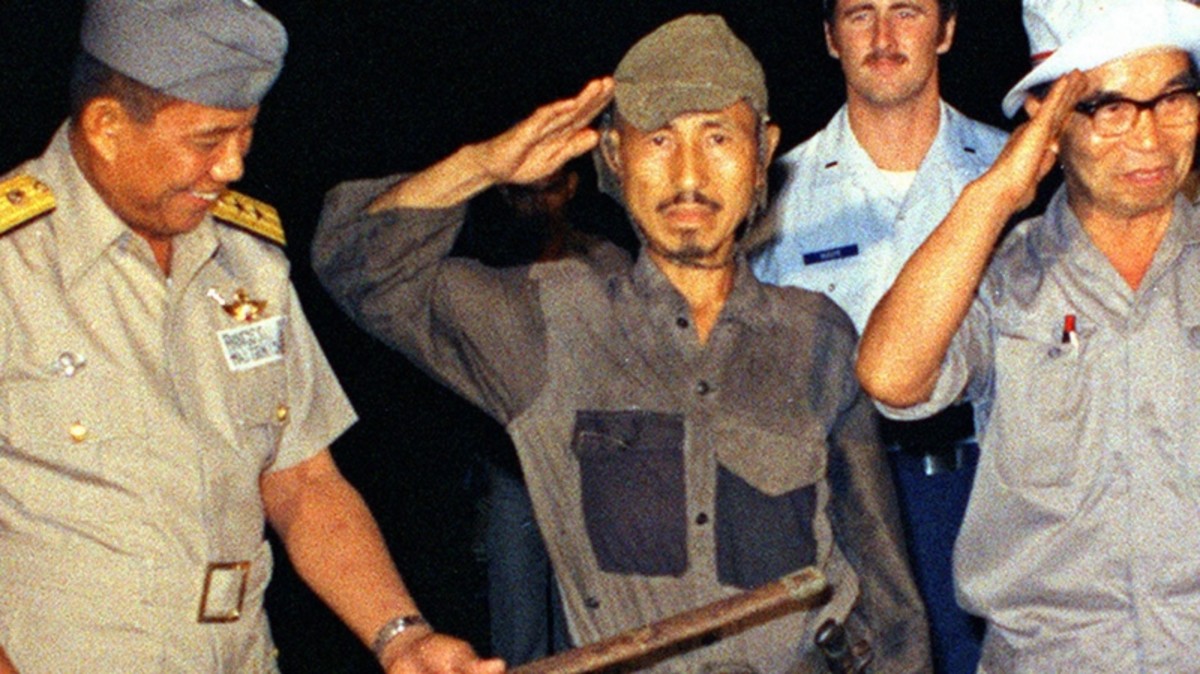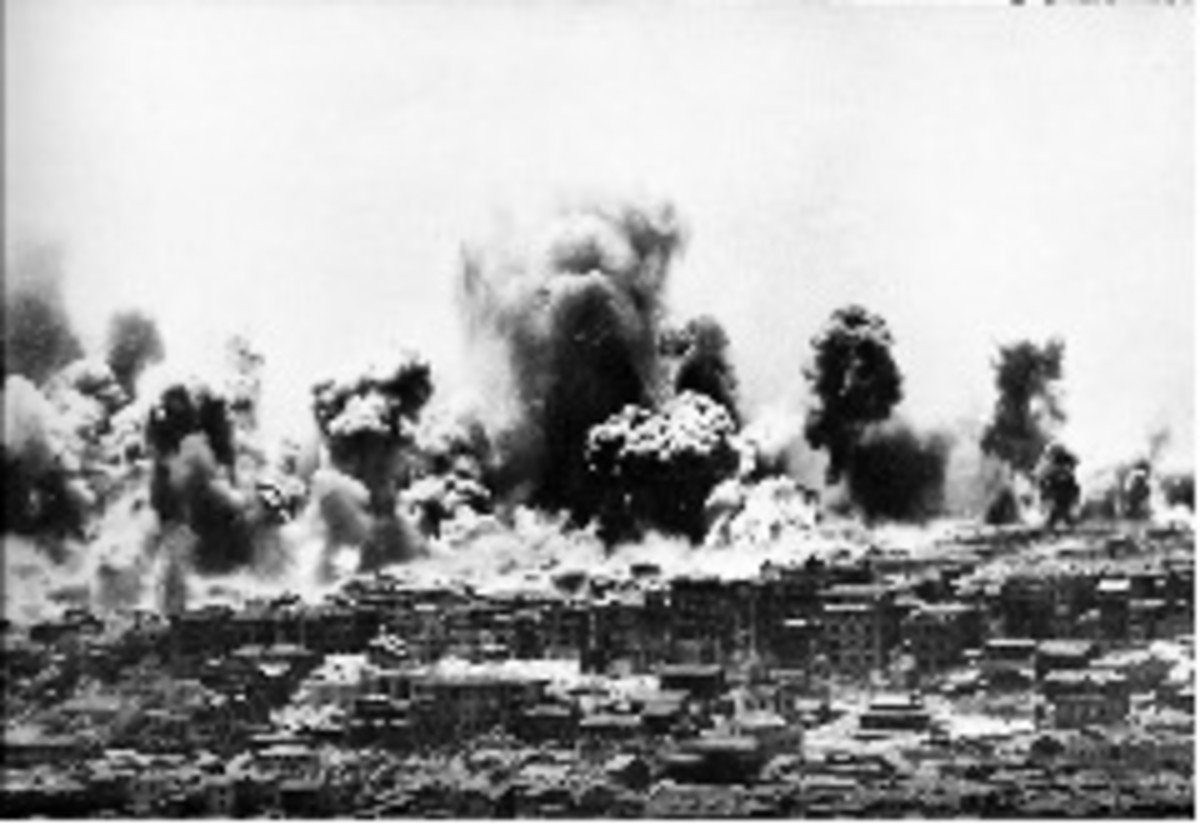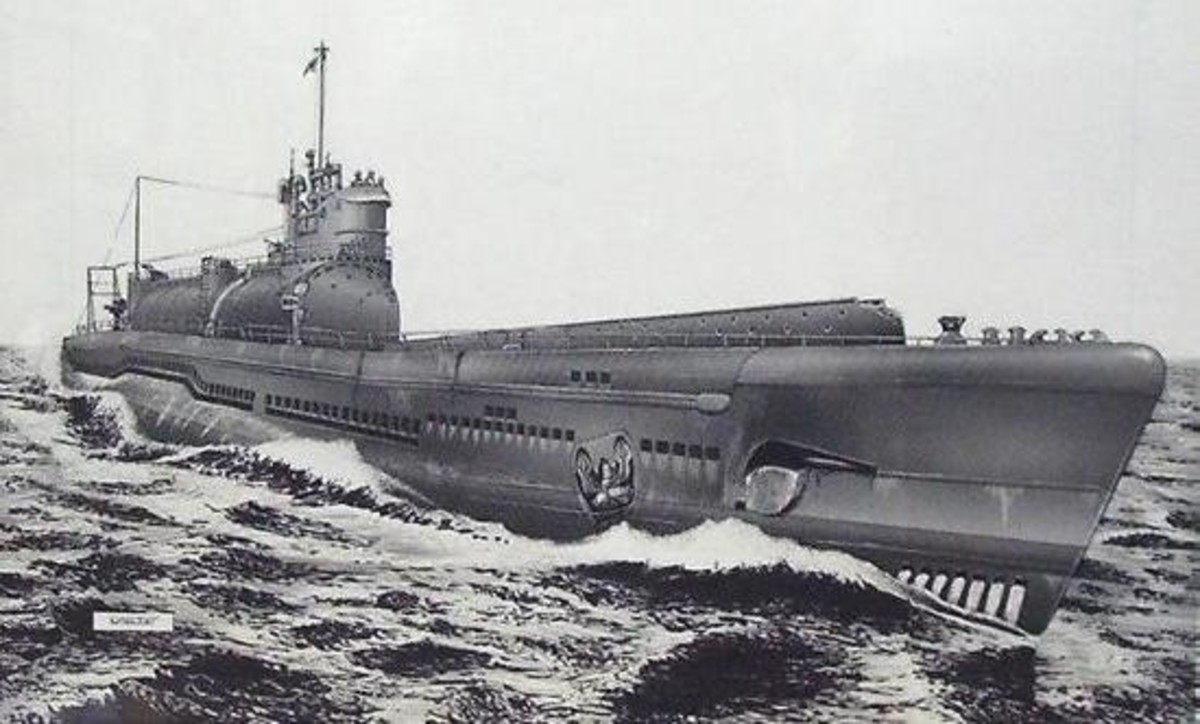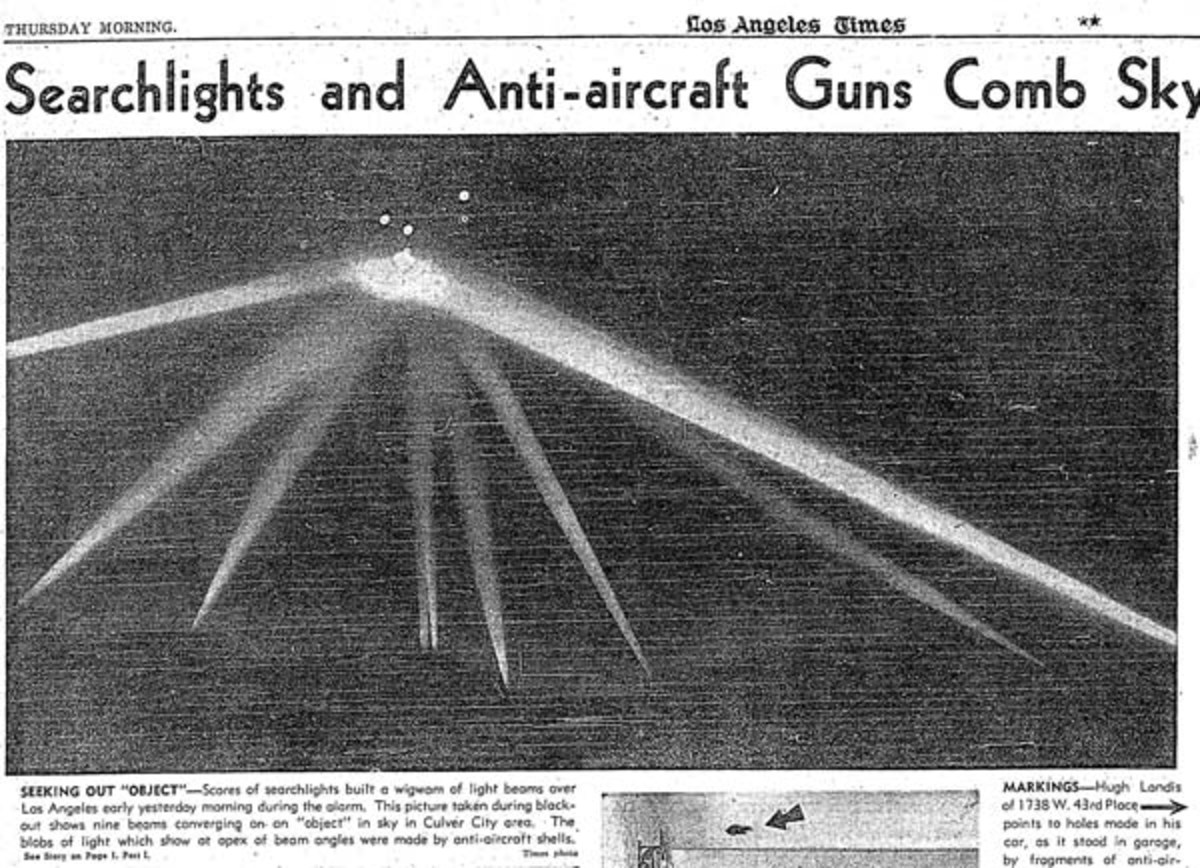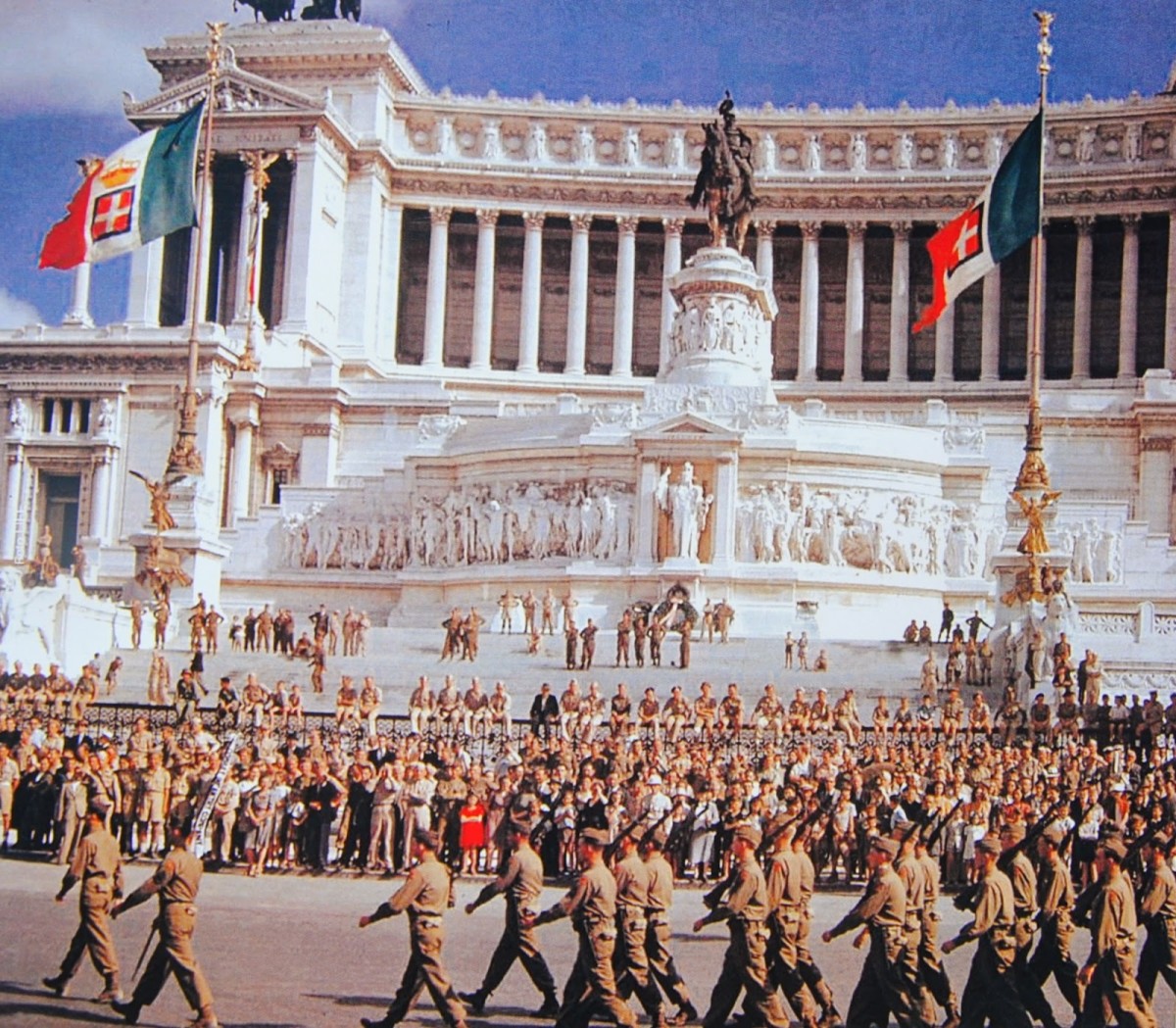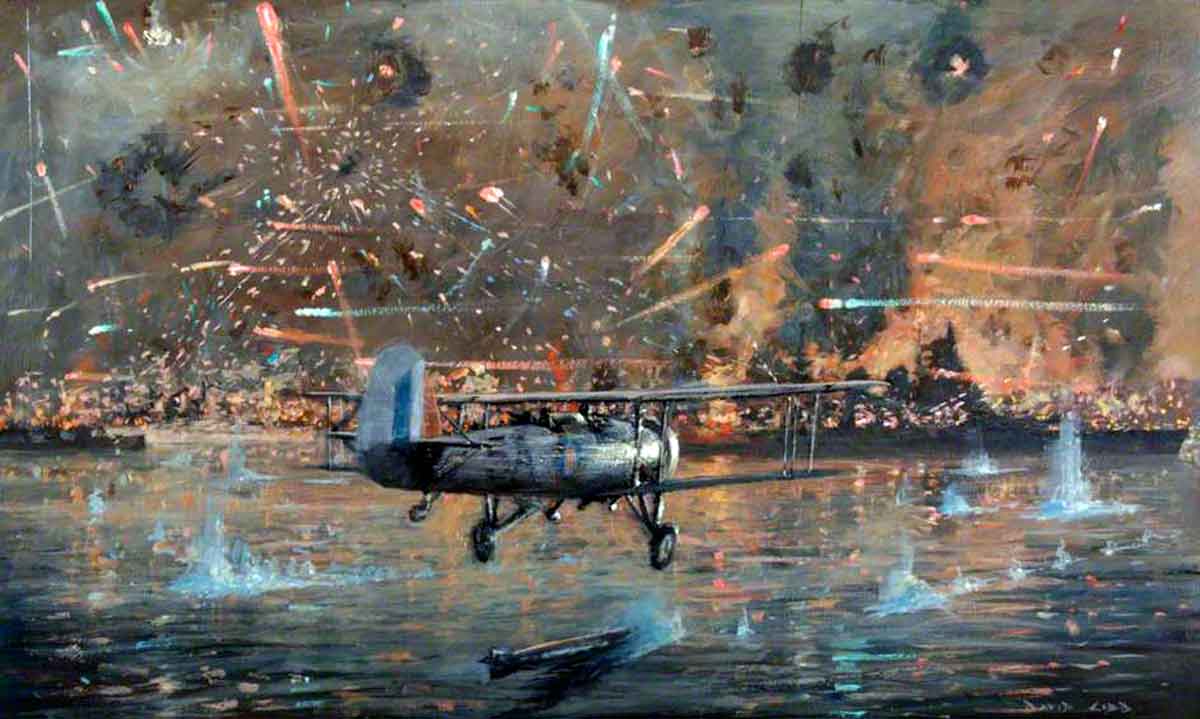- HubPages»
- Education and Science»
- History & Archaeology»
- History of the Modern Era»
- Twentieth Century History
World War 2 – understand it within the hour
The Second World War is also known as World War 2, or World War II, or just WW2 or WWII.
1. Who fought the war?
2. Why was it fought?
3. Who won?
4. Does it affect us today?
You need to know the answers to these questions – within the hour – to properly complete an assignment, an article, a webpage, or a similar project; or, to win an argument – but the effort required to find the answers is too tedious and you are short of time, too.
Or, you have realized that the history you learned in school was perfect in “political correctness” but there are just too many blanks in it – you want to know the truth for your own peace of mind. This is for you!
Japan's army seizes Shenyang (Mukden), September 1931
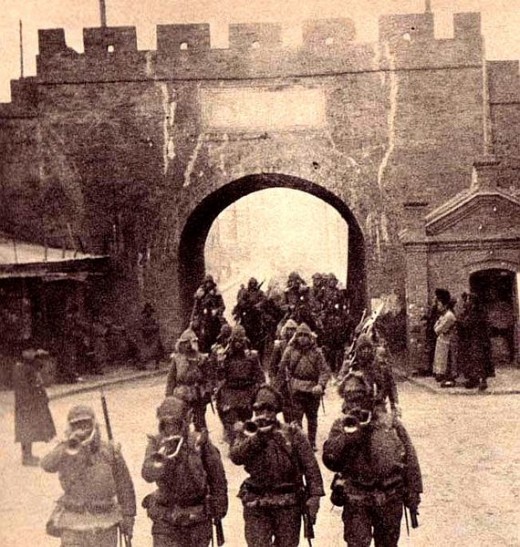
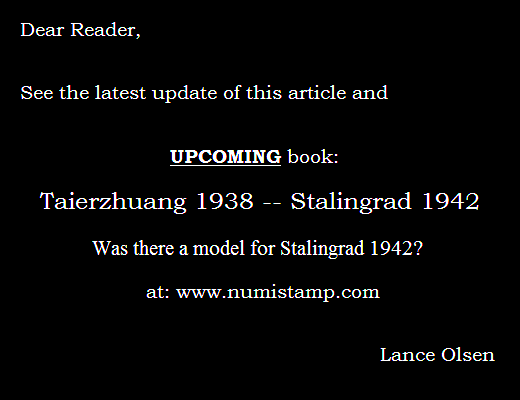
eBook available NOW!
Taierzhuang 1938 – Stalingrad 1942
Insight into a blind spot of WW2 Series (Volume 1)
ISBN 9780983843573
ASIN: B00MMGA9IS
http://www.amazon.com/dp/B00MMGA9IS
Amazon Price: $9.99
List Price: $9.99
1. Who fought the Second World War?
The Second World War was a worldwide war between two military alliances – the Axis Powers versus the Allied Powers.
The principal Axis Powers were Germany, Italy and Japan. These formed an alliance by a Tripartite Pact on 27 September 1940. This alliance of the Axis Powers was, and is, often referred to simply as “the Axis”.
Germany and Italy had signed a treaty of friendship on 25 October 1936. On 1 November 1936, Mussolini the dictator of Italy proclaimed that the treaty formed a Berlin-Rome line that was not a partition but "an AXIS around which all European states can collaborate" – hence, the term “Axis Powers”.
The treaty of friendship between Germany and Italy was made into an alliance in May 1939. The Axis Alliance expanded to include Japan in a Tripartite Pact in September 1940 – hence, the term “Axis Alliance” or “the Axis”.
The principal Allied Powers were Britain, USA, USSR and China. These formed an alliance including 22 other nations by a Joint Declaration entitled "Declaration by United Nations" on 1 January 1942. This alliance of the Allied Powers – formally and officially the “United Nations” – was, and is, commonly referred to simply as “the Allies”.
There were two principal theaters of war in World War 2
- East Asia, South-East Asia & Pacific Ocean – war began here in 1937
- Europe, North Africa & Atlantic Ocean – war began here in 1939
In the East Asia, South-East Asia & Pacific Ocean theater – in September 1931 (Mukden [now: Shenyang] Incident) Japan invaded China’s North-East, then in July 1937 (Lugou Bridge [Marco Polo Bridge] Incident) Japan began a full-scale war upon China. The principal combatants were Japan versus China – until December 1941 when the British, USA and Netherlands became principal combatants after Japan attacked their territories in South-East Asia & the Pacific Ocean.
In the Europe, North Africa & Atlantic Ocean theater – in September 1939 Germany invaded Poland and the Polish-British Common Defence Pact brought Britain into the war. The principal combatants were Germany versus Britain – until June 1941 when the USSR became a principal combatant after Germany invaded the USSR. The USA became a principal combatant in November 1942 when its military, together with the British, invaded French (Vichy) North Africa.
2. Why was it fought?
In Germany…
Adolf Hitler had propounded – in his book Mein Kampf (published in July 1925) – the concept of "Lebensraum" meaning "living space" or "habitat", and a war to destroy the USSR to acquire for Germany the necessary "living space". He became dictator of Germany on 23 March 1933 when the Enabling Act became the law.
On 5 November 1937, Hitler declared, to Germany’s foreign minister and the chief commanders of Germany’s military, that Germany could never be self-sufficient within its present borders, and needed Lebensraum – which could only be acquired by force.
Hitler’s Mein Kampf also propounded the concept of the superior master race versus the inferior other races, and sub-humans (Untermenschen).
Fair-skinned, tall, blond and blue or green eyed Germans and other Nordics, believed to be descended from the Aryans, formed the master race believed to be entitled to rule the world. All others were to be subservient. African negroes and Australian blackfellows were considered the most inferior and formed the lowest level of humans. All other human races were in between.
Below the lowest level of humans, were the Russians, Slavs, other undesirables – and especially the Jews – who being the parasitic Untermenschen (sub-humans) were unworthy of life and needed to be exterminated (hence, the Holocaust).
The racial discrimination and prejudice was color-blind and based on belief – the fair-skinned Russian and Slav "white" races were deemed to be sub-human and believed to be inferior even to the dark-skinned black Africans and Australian blackfellows.
In Italy…
At the time Mein Kampf was being published in Germany, Benito Mussolini was making himself dictator of Italy with the aspiration to re-create the glory of the ancient Roman Empire by building an Italian Empire. He envisioned making the Mediterranean Sea the Mare Nostrum (our sea) of Italy as it was in the days of the Roman Empire.
In Japan…
The population of Japan had more than doubled from 33 million in 1872 to 69 million in 1935 and Japan looked upon China as the source of resources (cheap labor & raw materials) and the market that it needed.
According to Japan's hallowed earliest records – the Kojiki (古事記, "Record of Ancient Matters") the Sun Goddess had – through Ninigi – commanded the Emperor of Japan to rule the world beneath heaven. This became Japan’s rationale for invasion of and domination over China (“all under heaven”) – its proponents declared invasion of China to be “seisen” (Holy War) because it was a divine commandment.
Jimmu Tenno was reputed to have declared at the founding of Japan in 660 BC the concepts of “Hakko Ichiu” (all eight corners of the world under one roof) and “Imperial Way” (united under the rule of the Emperor of Japan). All succeeding emperors were direct descendents of Jimmu Tenno.
The divine commandment and the combined concept of “All the world united under the rule of the Emperor of Japan” was made the justification for Japan to conquer by military force, in a Holy War, the spaces it felt entitled to by divine commandment.
In April 1934, Japan's Foreign Office spokesman Amau, a proponent of Holy War, declared what came to be known as the "Amau Doctrine" – which, in effect, made China a protectorate of Japan; with Japan being the sole, final and exclusive arbiter over China.
The proponents of “All the world united under the rule of the Emperor of Japan” and Holy War were dominant in Japan. In 1940, Japanese Prime Minister Konoye led 450 members of the Diet (Japanese Parliament) to form the 'League of Diet Members Believing the Objectives of the Holy War'.
Consequent to what was happening in Germany, Italy, and Japan – wars were being fought from 1931 onwards, separately, in both Asia and Europe.
Thence, the Tripartite Pact 1940 stated "...Japan, Germany, and Italy consider it the prerequisite of a lasting peace that every nation in the world shall receive the space to which it is entitled…therefore…it is their prime purpose to establish and maintain a new order of things…"
The “prime purpose” of the Axis Powers was “to establish…a new order of things” and they felt compelled to conquer by military force the spaces they felt entitled to.
In Asia
Japan had contrived the “Mukden (Shenyang) Incident" or “Manchurian Incident” in September 1931 to seize territory from China.
In April 1934, Japan declared what came to be known as the "Amau Doctrine" – which, in effect, made China a protectorate of Japan; with Japan being the sole, final and exclusive arbiter over China.
Japan then launched a full-scale war on China with the "Marco Polo Bridge Incident" in July 1937 – to dominate and control China by conquering it and then creating puppet states. This was the implementation of the "Amau Doctrine" by the proponents of “seisen” (Holy War). Japan was waging war on China.
In waging war, the Holy Warriors made no distinction between civilians and the military – both were attacked. Terror was an integral part of the modus operandi of the Holy Warrior. Terror was used as a principal weapon against civilians, for example, the Nanjing Massacre (December 1937 – January 1938), and then the “Kill All, Burn All & Loot All" (三光作戦) policy (1940 onwards). One Japanese regimental commander declared: “Our policy has been to burn every enemy house along the way we advance. You can tell at a glance where our forward units are.” In October 1944, to stave off defeat, the Holy Warriors resorted – in vain – to “kamikaze” (suicide bombing) attacks.
In 1938 it became clear that Japan’s invasion of China had become stalemated. Japan could win battles in China and occupy territory but could not pacify the territory it occupied.
The very first intact Japanese Zero fighter plane (serial number 3372) captured as a prize of war was captured by China – when its disoriented pilot landed on what was thought to be territory controlled by Japan – on 26 November 1941 (the US captured the "Akutan Zero" on 11 July 1942).
Fifteen of the 16 Doolittle Raid (18 April 1942) bombers made individual crash-landings scattered over an area of 500 square kilometers in Anhui, Jiangsu and Zhejiang provinces (of China) – all of which were either occupied by Japan or in which Japan's military moved at will. Yet, of the 72 aircrew-men who survived the crash-landings, Japan could capture only 8 (11%) – China's civilians and military rescued all of the 64 (89%) others.
These events show just how tenuous Japan's control of the territory it occupied in China was.
China's troops exult capturing a train from the invaders, 1931-1945
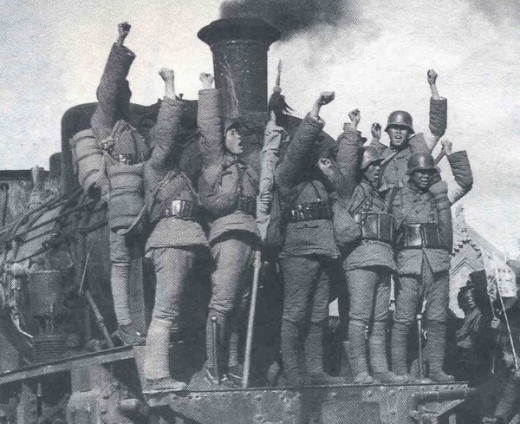
In Europe
Italy had invaded Abyssinia (Ethiopia) in October 1935 and won victory in May 1936 upon which Mussolini declared "At last Italy has her empire." In April 1939 Mussolini invaded and conquered Albania and added it to the Italian Empire.
Germany invaded Poland on 1 September 1939 and the Polish-British Common Defence Pact brought Britain into the war. Germany was at war with Britain.
In June 1941 Germany invaded the USSR – the implementation of the concepts and plans in Hitler's book Mein Kampf. Germany was waging war on the USSR.
Germany invades the USSR, June 1941
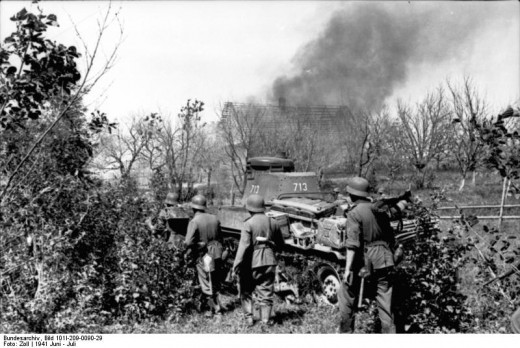
USSR counter-attacks near Moscow, December 1941
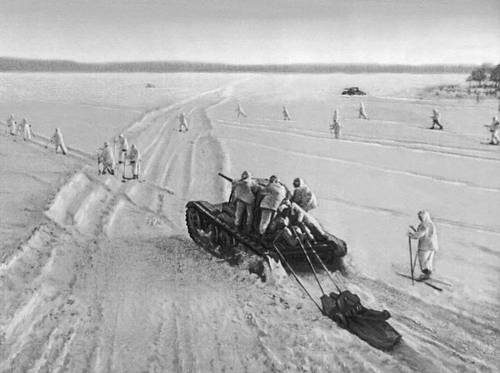
In August 1941, US President Roosevelt and UK (British) Prime Minister Churchill met in conference for 3 days, on the heavy cruiser USS Augusta and the battleship HMS Prince of Wales, off Newfoundland – in the Atlantic ocean. Their conference resulted in a joint declaration of 8 principles on 14 August 1941. Ten days later, in Parliament, Churchill called the declaration the "Atlantic Charter".
The first principle was "...their countries seek no aggrandizement, territorial or other"
The second principle was "they desire to see no territorial changes that do not accord with the freely expressed wishes of the peoples concerned"
The eighth principle was "...they believe that all of the nations of the world...must come to the abandonment of the use of force"
The "Declaration by United Nations" upon which the Allied Powers formed their alliance on 1 January 1942 – included in its title "Subscribing to the Principles of the Atlantic Charter".
The declared principles of the Allied Powers:
- their countries seek no aggrandizement, territorial or other
- they desire to see no territorial changes
- all of the nations of the world...must come to the abandonment of the use of force
were opposed to the “prime purpose” of the Axis Powers:
- to establish…a new order of things
- to conquer the spaces they felt entitled to
- by military force
The Axis Powers wanted to change the world into what they wanted it to be – but the Allied Powers were opposed to those changes.
Members of the two mutually opposed alliances being spread out worldwide meant the stage was set for a worldwide war.
Japan’s "Amau Doctrine" – declared in April 1934 – threatened the vested interests that the European powers (especially the British) and the US had in China. For example, for the US this meant the prospect of losing its special privileges such as concessions and extraterritoriality (Treaty of Wangsia – or Wangxia, or Wang Hia, or Wang Hiya – 1844), in China; for the British it meant the prospect of similar losses and the loss of immensely profitable banking houses in Shanghai and treaty ports (Treaty of Nanking, 1842; Treaty of the Bogue, 1843) in China; for both it meant the prospect of exclusion from China’s commerce, industry and markets.
Consequently, in 1939 the US, the British, China, and the Netherlands agreed among themselves to refuse to sell to Japan anything that it could use to wage war upon China – Japan called this the ABCD (American British Chinese Dutch) encirclement. If Japan could not continue to invade China – Japan could not win the war to conquer China.
Japan realized that to continue waging war upon China it needed the oil, rubber and other war material available from European-controlled territories to the south of China.
That meant attacking and conquering the Netherlands East Indies to secure the supply of oil – which was of paramount importance to Japan. Oil was vital to Japan’s industry and Japan’s ability to wage war upon China. At that time, the Netherlands East Indies were the fourth-largest producer of oil worldwide. Hence, the Netherlands East Indies were a prime target.
But Malaya (source of rubber and tin) and northern Borneo (also a source of oil) which were British territories with strong British military forces, e.g., “Fortress Singapore” were between Japan and the Netherlands East Indies – these had to be attacked first to prevent them from interfering when Japan attacked the Netherlands East Indies.
Japan had to attack, also, the US Navy’s Pacific Fleet in Pearl Harbor, Hawaii – to prevent it from interfering in Japan's attack on British Malaya and northern Borneo and the Netherlands East Indies.
Japan attacks Pearl Harbor, 7 December 1941
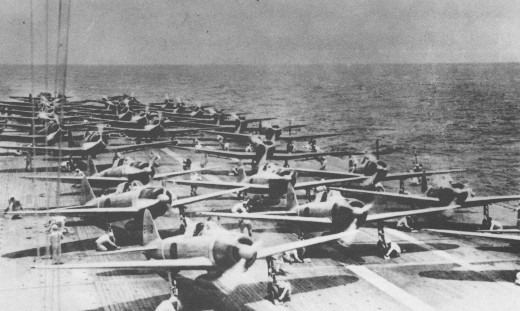
Results of Japan's attack on Pearl Harbor
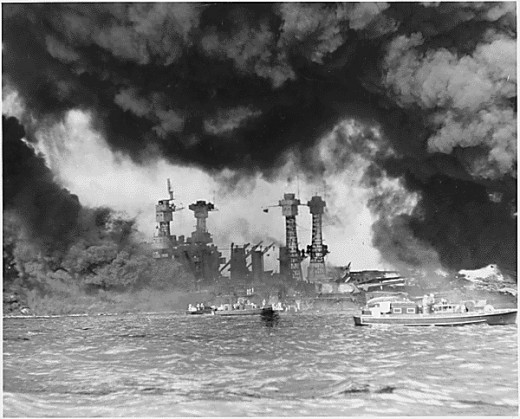
There were important British and US military bases in the region, the British in Hong Kong and the US in the Philippines (which was controlled by the US), on Guam, Midway and Wake – which Japan needed to attack, too, to destroy British and US power in the region.
Japan planned simultaneous attacks first on both Kota Bharu (Malaya, British territory) and Pearl Harbor (Hawaii, US territory), to be followed by attacks on Hong Kong, the Philippines, Guam, Wake and Midway (at 177°W – in the Western Hemisphere, like Pearl harbor) some hours later. The Netherlands East Indies were next.
As Kota Bharu – in the Eastern Hemisphere – is in a time zone 18 hours ahead of Pearl Harbor – in the Western Hemisphere – the simultaneous attacks were scheduled to occur when it was 8 December 1941 at Kota Bharu, but still 7 December 1941 at Pearl Harbor – and so it came to be. Japan was waging war on both Britain and the USA.
Kota Bharu is in Kelantan which had been a vassal state paying tribute to Siam (Thailand since 1939), its suzerain, until the Anglo-Siamese Treaty of 1909 made it British territory.
Pearl Harbor is in Hawaii which had been the sovereign Republic of Hawaii until it was annexed by the US and made a US territory – not a state of the US – in 1898 (Hawaii became a state of the US in 1959).
The Japanese attacks on Kota Bharu and Pearl Harbor brought Britain (a country in Europe), and the USA (a country in the Americas) – into the war in Asia. The USA – a country in the Western Hemisphere – was now battling in combat in the Eastern Hemisphere. The Axis were fighting the Allies in both hemispheres now; it had become a world war – the Second World War.
3. Who won?
The Axis waged war upon the Allies – to change the world into what the Axis wanted it to be – and the world was changed, but the result of the change was not what the Axis had intended.
The Axis Powers suffered total defeat and the Allied Powers won victory. Italy surrendered in September 1943, Germany in May 1945, and Japan in August 1945.
4. Does it affect us today?
The Japanese intended to replace the “White” colonialist and make themselves the new master. The Japanese were able to defeat the “White” colonialists and this proved that “non-white” people could defeat the “White” colonialists. Non-white colonial subject peoples realized they could free themselves from the “White” colonialists – this was not the intended effect of the Japanese war efforts, but the result was that colonialism became untenable after WW2.
In contrast to the other powers which all suffered severe destruction inflicted by the enemy, the US mainland was beyond the range of enemy attacks. Instead of suffering devastation, the US was able to build its military and industrial might on its mainland, beyond the range of enemy attack, while fighting the war.
For example, Germany’s production of the V-2 rocket – the world's first long-range combat-ballistic missile – was crippled by Allied bombings of the Peenemünde V-2 plant in August 1943 and July/August 1944. In contrast, the US “Manhattan Project” which produced the world’s first atomic bomb by July 1945 was carried out on the US mainland at several sites – all beyond the range of Axis attacks; thus, then the US alone had nuclear weapons. This made the US a military superpower by the end of WW2.
V-2 rocket launch at Peenemunde, 1943
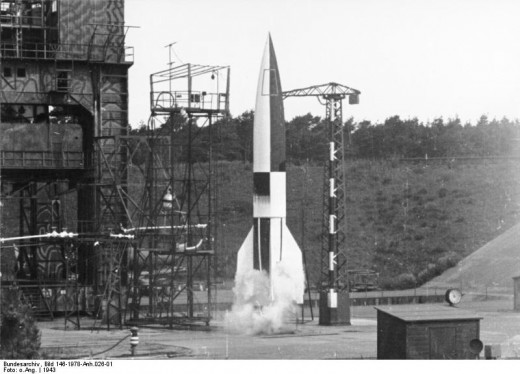
World War 2 – When and where did it begin?
- World War 2 -- Did it begin at Pearl Harbor?
Strangely, almost no one is aware of the answer that has the strongest claim to validity -- 8 December 1941, Kota Bharu, British Malaya.
The successors to the Axis Powers realized that they had to acquire what they needed by economic means instead of military force. In the decades after the war, both Germany and Japan developed their economies on the US model – to become pre-eminent economic powers worldwide.
As the US mainland was beyond the range of enemy attacks and therefore unscathed by WW2, only the US had the funds needed to re-start the devastated economies of post-WW2 Japan and West Germany. Funding for Japan was US$2 billion to be repaid with interest. Funding for West Germany was US$4 billion, a third in loans to be repaid with interest, the balance in grants – but US$10 billion of German scientific & technological intellectual property was confiscated by the UK and US. US funding led West Germany and Japan to economic development on the US model.
The Nationalist government of China sent many of its best troops – e.g., Battle of Shanghai, 1937 – and fought 22 major battles (involving no less than 100,000 men in total from both sides), and 1,171 minor battles (most involving no less than 50,000 men in total from both sides) against the Japanese invaders. Meanwhile, the Communists concentrated on building their strength and fighting a guerrilla war against the Japanese – the Communists fought only 2 major battles against the invader. This exhausted the Nationalist military while the might of the Communist military increased to reverse the balance of power between them. Soon after WW2 the Communists defeated the Nationalists in a civil war and China became communist.
Communist Chinese troops – veterans of the war against Japanese invasion in WW2 and the Chinese Civil War – fought the US to a stalemate in the Korean War of 1950-1953 and China became recognized as one of great powers.
Hitler’s attempt to exterminate the Jews by mass-murdering several millions in the Holocaust had the unintended result of the State of Israel coming into existence.
Korea was divided into North and South by the way the war ended and remains divided today. At the end of WW2 the Americans and the Russians agreed that Japanese forces north of the 38th parallel in Korea were to surrender to Russian forces and those south of the 38th parallel were to surrender to American forces. The 38th parallel remains the border between North and South Korea today.
Today, there are national and international entities that feel compelled to acquire, or impose upon others – by force of arms, or any other means (e.g., stealth, infiltration, deception, etc), what they feel entitled to by race or – by belief. Those who do not learn from history are doomed to repeat it!
World War 2 – What difference did China make?
- The "Greater East Asia War" and World War 2
What difference did China make to WW2? Had Japan deployed, or been able to deploy, the major portion of its military against the other Allied Powers instead of China -- WW2 would have progressed on a different timeline and developed different results
Taierzhuang 1938 -- Stalingrad 1942-1943
- Are the similarities just coincidence or was Taierzhuang the model for Stalingrad?
Taierzhuang 1938 -- Stalingrad 1942-1943 A militarily powerful country invades a very much larger country to seize territory. The invader has had an almost unbroken string of impressive victories...

